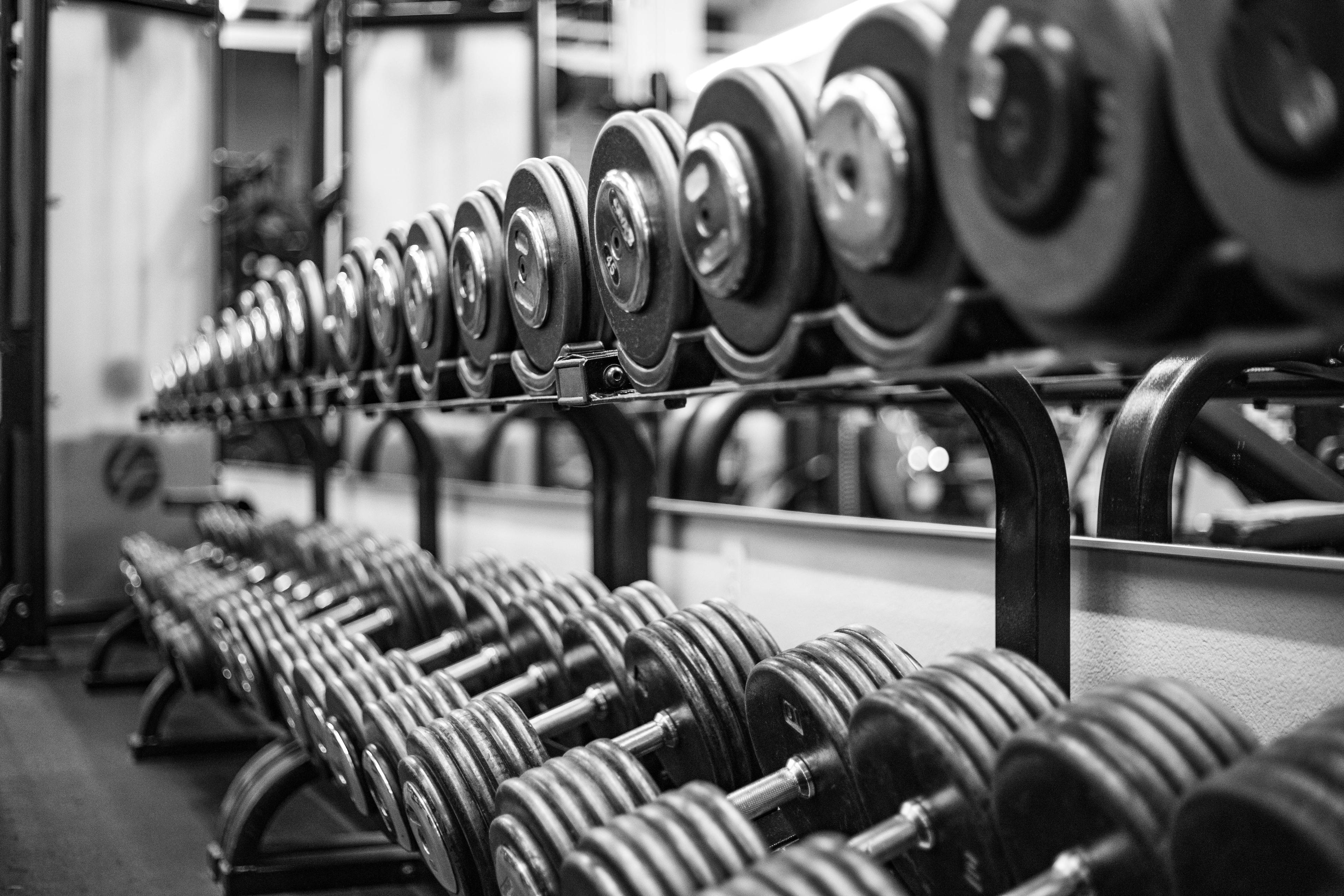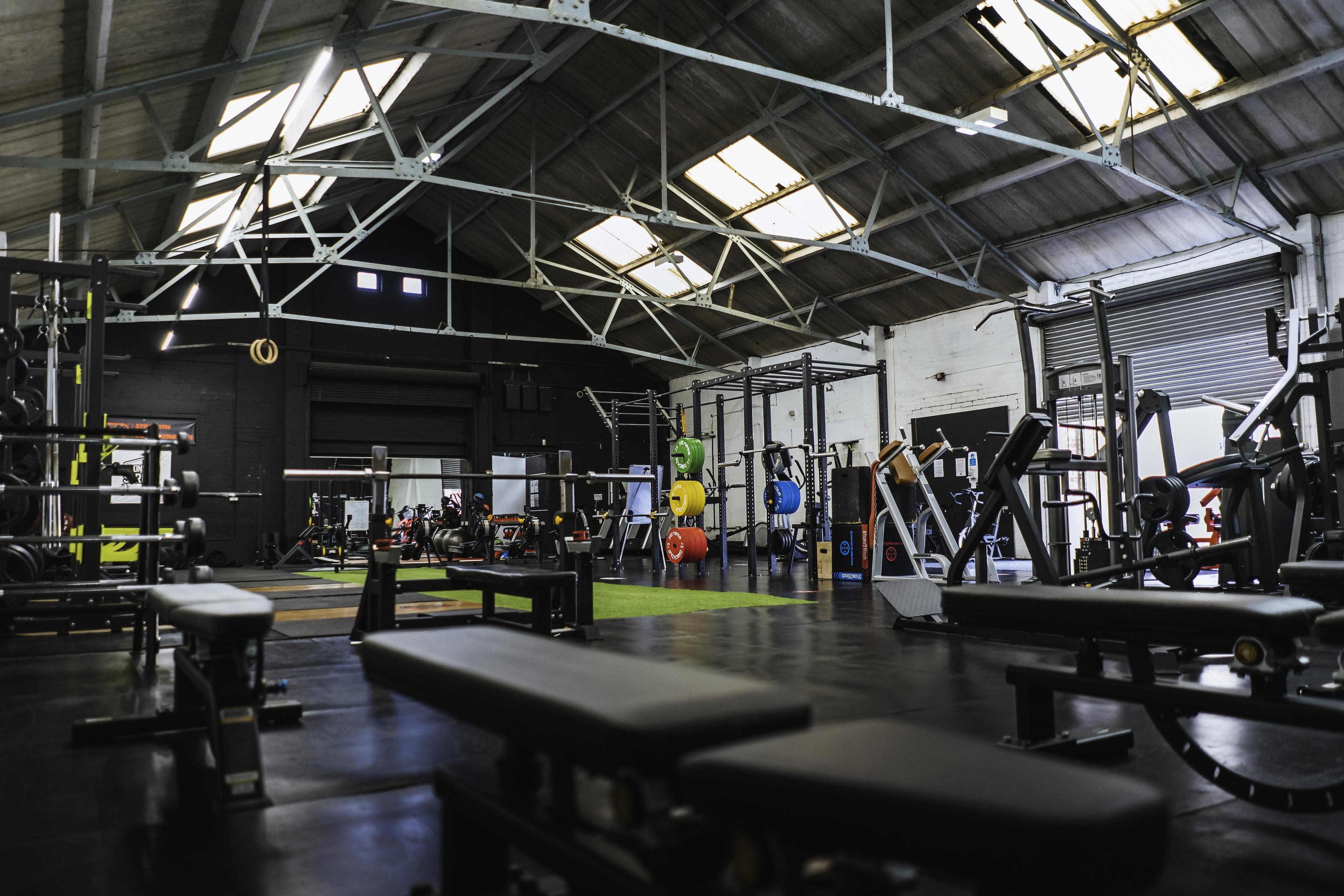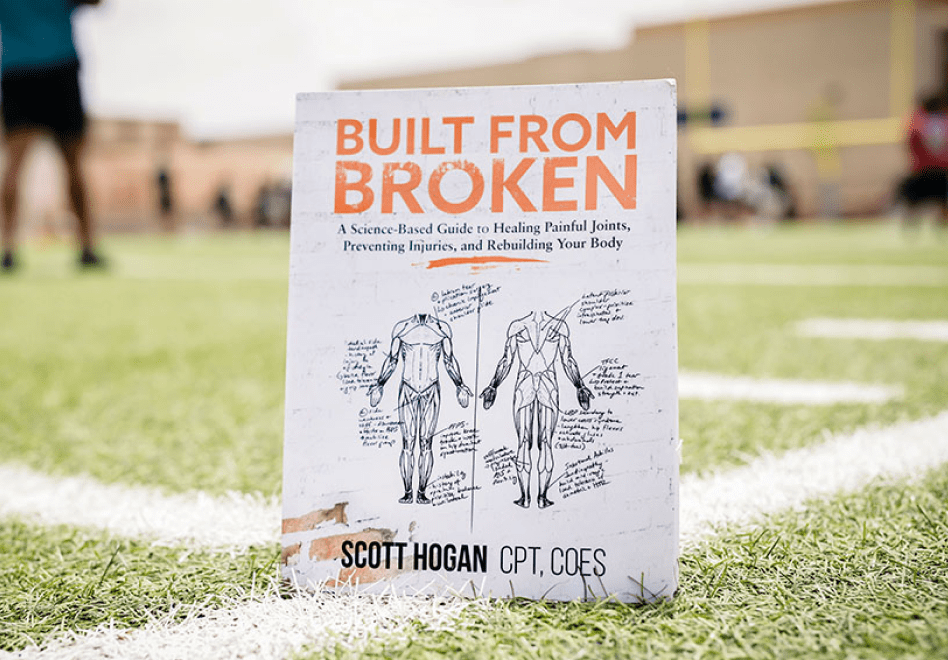
Be built (to last).
The right supplements can help you recover naturally and build a resilient body.

Supplement Quiz
Take this short quiz to discover the perfect supplements for your needs and goals.
About SaltWrap

Built from Broken
Get the best-selling book from SaltWrap founder, Scott Hogan, and start rebuilding today.
5 Reasons Why Less Is More When It Comes to Weight Training
by Scott Hogan , ACE-CPT , COES
In this article, I make the case for why training less frequently will give you more of what you want — and more time for the rest of your life.
It’s time to try following a schedule that achieves your desired results with less time spent in the gym.

Why Less Is More When It Comes to Weight Training
Plenty of articles out there debate and make a case for a specific weight training frequency.
Some say one or two days per week is all you need. Some say more is better, with five to six days per week being optimal.
You can cherry-pick studies that support just about any exercise frequency you like. But most of these studies miss the practical, boots-on-the-ground application of an exercise program in the context of real life: jobs, families, and schedule limitations. (Not to mention sleep, work-life balance, a social life, and having other hobbies.)
In this article, I want to talk specifically to gym rats who grind away in the weight room every Monday through Friday. Five days per week, and sometimes more. (I’m talking to myself in this article, too, by the way.)
But if this doesn’t describe you — or you aren’t even interested in weight training — there’s still plenty to learn from and ponder here.
If lifting weights Monday through Friday is working for you, then by all means, keep doing it.
But if you are not getting the results you want, are feeling burned out, or keep bumping into repetitive use injuries, then it’s time to start thinking differently about why you're doing it and what you want to accomplish.
If that’s the case, then it’s the perfect time to try following a schedule that achieves your desired results with less time spent in the gym.
Here are the top five reasons why less is more when it comes to weightlifting frequency – and why training five or more days per week is likely not your best path to results:
1. Sandbagging is inevitable.
Because you train nearly every day, there is simply no way you recover fully between sessions unless you have incredibly high levels of discipline around sleep, nutrition, and mobility work.
Maintaining a high level of intensity during your workouts when you train daily is also challenging. It inevitably leads to merely going through the motions on most exercises, especially toward the end of the session.
This less-than-intense approach, also known as sandbagging, is so common with gymgoers that it’s virtually the rule. And since the only way to progress is to progressively overload your muscles (i.e., more weight lifted or more repetitions completed), this low-intensity method takes you nowhere.
Exceptions to this rule include bodybuilders and athletes who structure their life around exercise, nutrition, and sleep to support daily recovery.
2. Joint stress and repetitive use injuries accumulate.
When you train five days per week, planning consecutive workouts that do not cause stress in one or more joints is difficult. Shoulders and elbows are tough to rest, no matter how intelligently you plan your body part splits.
Shoulders get banged up on days you push weight horizontally or vertically. And even on lower-body-focused days, shoulders are stressed when you climb under a barbell or hold a dumbbell in front of your body, for example.
Elbows get it even worse. Unless you are sitting on a machine that doesn’t require you to brace yourself, your elbows are stressed daily with carrying weights, gripping, pulling, and pushing.
This can lead to shoulder rotator cuff tears, elbow pain, and various wrist and hand injuries.
3. Training only 2-3 days per week makes fat loss easier.
This is counterintuitive (and goes against simple calories in, calories out logic), but working out intensely every weekday increases your appetite, making it challenging to stick to a structured diet. And what you eat is much more important than how often you exercise regarding fat loss.
If your primary goal is to lose fat, I suggest lifting weights less frequently than you would otherwise. This frees up mental energy to focus on what really matters: nutrition and calorie control. That’s tough to do when you are grinding through weight training sessions without recovery days spliced in.
4. Taking more "off" days gives you precious time back for other pursuits.
Even if you genuinely enjoy the gym, you probably feel strapped for time. If you could get the same results in three days per week, would you do it? What would you do with that extra hour you typically spend in the gym?
Even if you depend on the gym for psychological and mood benefits, the same can be said of going for a long walk or doing some other active hobby.
Just because you aren’t lifting weights doesn’t mean you have to be sedentary — an active rest day could include a long walk, hiking, some light mobility work, or taking a yoga class.
5. You will enjoy and appreciate the gym sessions more.
When you schedule more rest days, your overall enjoyment and positive anticipation of workouts will increase.
There’s something to be said for getting your training in even if you don’t feel like it. But in my experience, long-term results are better if you approach your workouts with positive emotion and excitement.
The more often you can cultivate a positive mindset and eager physical state, the better your workouts will be.
So, your focus should not be on grinding through painful, tedious gym sessions. Your focus should be on building a schedule that allows you to enjoy the process. If for nothing else, because it produces better results.
Not to mention it means you don’t have to be miserable every day.

Finding Your Optimal Frequency
You might be wondering, if five days per week is too much for most people, what is the optimal frequency?
It depends on too many variables to list. But for most people who want to gain strength, build muscle, and keep body fat low, three days per week works best.
If you are recovering from an injury, you might need more frequent training sessions to make time for the extra corrective work. But otherwise, three solid sessions per week strikes the perfect balance of enough stimulus to elicit muscle protein synthesis, enough recovery to allow for complete adaptive responses between sessions, and enough time off to feel fully recharged each training day.
Full disclosure: there will certainly be periods in the near future where I’m at the gym 4-5 days per week. If it matches my goals, and my joints are up for it, I’ll be there.
For you, even if you don’t buy this “less is more” philosophy, I challenge you to try it for just two weeks and see how you feel.
It might be nothing more than a de-load period before you’re back to the daily grind. Or it might give you a brand new tool in your training toolbox for consistently progressing toward your goals.
Speaking of your training toolbox, here are some extra tips you can add to it.
7 Tips for Getting More From Fewer Workouts
-
Make compound movements 80% of your training, and isolation movements (that train only one muscle group) 20% or less.
-
Focus on gaining strength from week to week, not merely working muscles.
-
Keep your workouts to one hour or less.
-
Stick to low-intensity cardio on days you lift to allow for optimal recovery.
-
Build a 5-10 minutes warmup routine that includes dynamic stretching for the body parts you will be working on that day and corrective exercises for your weakest (or most painful) 1-2 joints.
-
Aim for a Monday, Wednesday, and Friday weight training schedule with Tuesday and Thursday as active rest or hobby days.
-
Group like body parts together for maximum recovery. Here are a couple of good options:
Upper/Lower Split :
Monday: Upper Body
Wednesday: Lower Body
Friday: Full Body
Well-Rounded Bodybuilding Split :
Monday: Shoulders and Back
Wednesday: Legs
Friday: Chest, Arms (plus additional work for hamstrings, calves, and other weak points)
Founder: Scott Hogan

I created SaltWrap to bring together the most practical ideas in therapeutic sports nutrition, corrective exercise, and functional fitness — with the goal of keeping you (and myself) strong, mobile, and built to last.
I've worked as an A.C.E. Certified Personal Trainer, Orthopedic Exercise Specialist, and nutritional supplement formulator.
But more importantly — I've spent most of my life battling injuries, joint pain, and just being plain beat up. So I know what it's like to struggle toward fitness goals.
SaltWrap is here to push you through injuries, setbacks and perceived physical limitations. To a place beyond what you think you're capable of. Sign up here to stay in the loop.
Learn more about my best-selling injury prevention and recovery book, Built from Broken.







